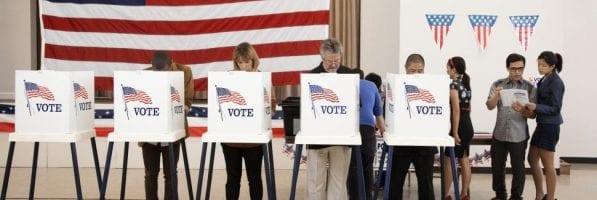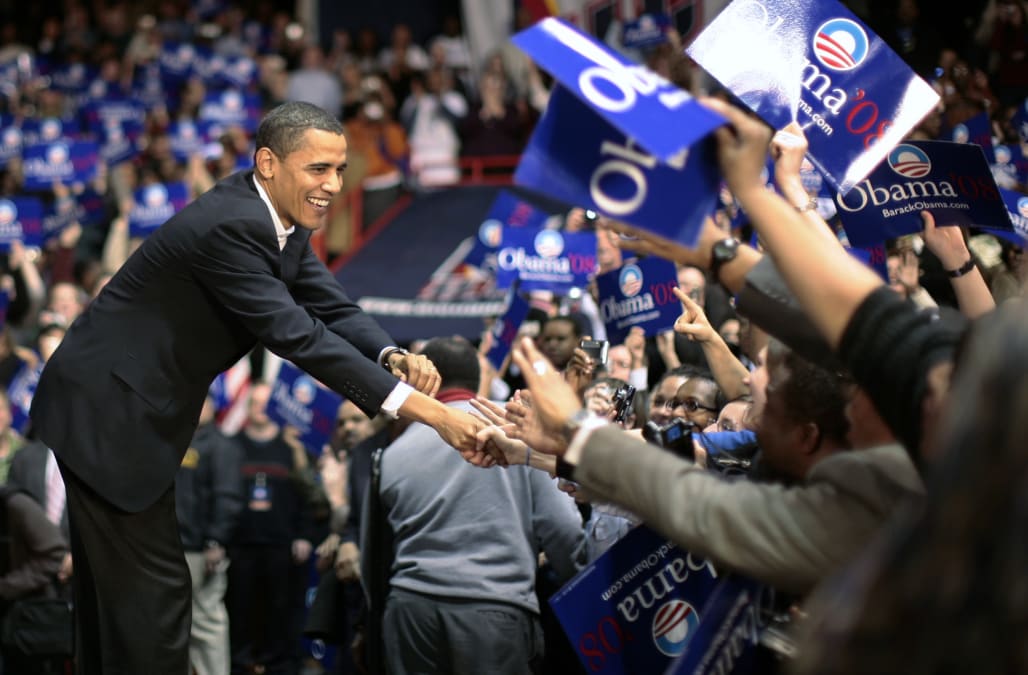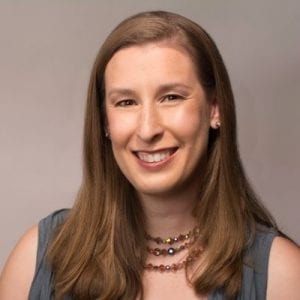Improved Candidates, Working in Puerto Rico, and More – Chicago News

Let’s explore some of the most interesting stories that have emerged from Chicago business schools this week.
Take 5: Tips for Widening — and Improving — Your Candidate Pool – Kellogg Insight
Northwestern Kellogg Associate Professor of Management and Organizations Lauren Rivera and Professor of Finance Paola Sapienza recently published new research that offers discrete advice on how to “widen the talent pool, whether by uncovering your own hiring biases or by turning your sights to often-overlooked candidates.”
1. Be Aware of Biases
According to the article, “Even when we set out to hire on the basis of merit, hidden biases can get in the way. Being aware of those can help us not only act more fairly, but also make the best business decisions.” For instance, “Hiring managers also tend to look for a sense of personal connection with an applicant — with upper-class interviewers generally preferring candidates with similar pedigrees, whether they realize it or not.”
2. Think Small Specialist
According to the article, the late professor of management and organizations Keith Murnighan “found evidence of a bias towards generalists over specialists because hiring managers tend to look for one employee at a time — rather than hire an entire team all at once — it’s hard for them to see exactly which specialists they need.”
Murnighan wrote, “Look at the interactions from a distance and say, ‘What is it that I need to change? What do I know that I’m too close to the process to really see?’”
3. Look to Local Talent
Professors Rivera and Sapienza encourage companies to focus on hiring local talent so “reps are able to build solid relationships with their accounts.” In other words, “firms whose success depends on establishing themselves as a “local” brand should consider the importance of thinking — and hiring — locally.”
4. Value Veterans
Many companies overlook veterans as viable candidates, which is a shame because the military “fosters collaboration, adaptability, leadership, selflessness, and many other qualities that make veterans invaluable in the business world. The article cites research from Kellogg finance professors Efraim Benmelech and Carola Frydman who found that “firms run by CEOs with military experience performed better under pressure than those run by other CEOs.” They also found that “CEOs with a military background were up to 70 percent less likely to engage in corporate fraud compared to their civilian-only peers.”
5. Consider the Ex-Offender
Another population that job searches tend to neglect is ex-offenders. According to the article, “Many employers are reluctant to hire people with criminal records, assuming that they possess fewer skills, are more likely to behave unethically in the workplace, or both.”
“Not only can doing so save money on turnover costs, but from a societal level, it also can help keep ex-offenders from going to jail again.
Research from professor of managerial economics and decision sciences Nicola Persico, finds that “ex-offenders who do get hired are no more likely to be fired than non-offenders — and are about 13 percent less likely to quit, resulting in lower turnover costs for the companies that hire them.”
You can read the rest of the article here.
Testing the Waters: How a Team of MBA Students Put Their Business Skills to Work in Puerto Rico – Mendoza Ideas & News

Notre Dame MBA candidate Corey Waldrep ’19 samples the result of a low-cost water filtration kit in Puerto Rico. On the right is dirty, debris-filled water and on the left is filtered water. (Photo by Matt Cashore/University of Notre Dame)
Last month, Notre Dame Mendoza College of Business MBA students and former military veterans Tyler Shields, Luke Wilson, Dan Weathers, Corey Waldrep, and Robert (R.J.) Dulin, as well as advisor Andrew Wendelborn, traveled to Puerto Rico as part of nonprofit Waves for Water’s initiative to provide global access to clean water in the aftermath of Hurricane Maria, whose 175 mph winds “destroyed more than 80 percent of the island’s power lines and left 3.4 million Americans in the dark” last September.
According to the article, the objectives of project were for “students to gather and utilize important demographic data; gain first-hand experience in working with an NGO partner to provide crisis support; learn a model for creating self-sustaining practices for local populations; and become immersed in best practices for working with indigent populations with dignity, equality and compassion.”
Shields writes, “A lot of what we did over there in Puerto Rico was so-called guerrilla humanitarianism. You don’t necessarily know where the need is or what the need is. You just know that there is a need.”
You can read more from the article here.
As Uber, Lyft Eye Public Offerings, Gies Professor Says Clock Could Work to Smaller Rival’s Advantage – Gies College of Business News
University of Illinois Gies College of Business Clinical Assistant Professor of Finance Rob Metzger took to the blog to offer his expertise drawn from 20 years in investment banking on whether Lyft or Uber should go public first.
According to the article, Uber’s $120 billion IPO is more likely to go public first in late 2019. But Lyft’s roughly $15 billion IPO could beat them to the punch in spring of 2019.
Metzger writes, “I think the Lyft team feels that, even though they’re significantly smaller, they believe that their financial metrics are better, their operating metrics are better, and they haven’t had some of the negative press that Uber has had.
“So [Lyft] may want to be out on the forefront to tell that story, as opposed to being in Uber’s shadow.”
2018 Forté Foundation Data Reveals Women’s MBA Enrollment at 38 Percent

2018 was a big year for female MBA students. According to the latest membership school data from the Forté Foundation, women’s enrollment at full-time MBA programs reached 38 percent on average. In addition, one Forté school reached gender parity (50 percent male/female enrollment) for the first time, and more than one-third of schools reached 40 percent enrollment.
“While the number of Fortune 500 women CEOs has declined in the last year, it’s heartening to see women’s enrollment in business school continues to increase, albeit at a slower pace than last year,” Elissa Sangster, Forté Foundation CEO, said in a press release. “We continue to aim for 40% women’s enrollment by 2020 at our member schools as an MBA provides an economic mobility engine for women, and helps build the pipeline of women leaders. And countless research shows that having more women in senior leadership improves corporate financial performance.”
Key Forté Foundation Statistics

- Over the last five years, from 2014, female MBA enrollment at Forté schools has steadily risen with 19 out of 52 schools reaching the 40 percent mark this year. That’s a significant improvement from just three schools at 40 percent in 2014.
- The USC Marshall School of Business was the first Forté school to achieve gender parity this year with 52 percent women. Three other schools got close: Northwestern Kellogg (46 percent), Dartmouth Tuck (45 percent), and Imperial College Business School (45 percent).
- More than half of Forté schools (29 schools) reached 35 percent female MBA enrollment.
A Few Surprises
Interesting enough, some of the Forté numbers were a reversal of last year mainly when it came to international MBA programs. While the U.S. school enrollment went up by close to 1 percent (38.7 percent in 2018 from 37.8 percent in 2017), the opposite was true for Forté schools abroad. Those schools saw a decline of a little over 1 percent (going from 36.2 percent last fall to 35.1 percent this fall). Whereas last year, international schools saw considerable gains in female enrollment with an almost 3.5 percent increase. However, overall, female MBA enrollment in the U.S. and abroad increased slightly to 37.8 percent from 37.4 percent last year.
To learn more about what’s going on at the Forté Foundation and to see how it’s impacting female MBA enrollment around the globe, read the original press release.
This article has been edited and republished with permissions by its original source, Clear Admit.
Stanford GSB Tops Remodeled Bloomberg Businessweek Ranking

The Stanford Graduate School of Business is no stranger to a top spot, but this is their first time claiming top honors on the Bloomberg Businessweek Best B-School list for U.S. programs.
Election Day: What Schools are Saying

It’s election day in the U.S., so for our international readers: whoops! Let’s check out some of the day’s big stories coming out of U.S. schools.
Engineered Electioneering – Kellogg Insight
“When it comes to persuading voters, the timing of a candidate’s message may be as important as the message itself,” Kellogg Insight explains.
The overall conclusion of how to approach election messaging comes from new research by Angela Y. Lee, Professor of Marketing at the Kellogg School of Management. With Concordia University of Montréal Assistant Professor Hakkyun Kim and University of Minnesota Professor Akshay R. Rao, the trio’s research finds surprising details that former U.S. President Barack Obama successfully utilized in 2008.
In short, the group’s research finds that voters are more responsive to grander, large-scale ideas the further the election is away. However, as Election Day draws closer, more concrete ideas take precedent.
“[Obama] was emphasizing abstract themes and capturing the imagination of caucus goers, while his opponents were capturing the attention of the D.C. establishment, who then spent a fair amount of time dissecting and critiquing their various plans to fix health care, get out of Iraq, and what have you,” Rao says of Obama’s 2008 campaign.

Northwestern Kellogg research finds that sweeping campaign messaging is more effective when Election Day is further away; a campaign tactic utilized heavily by Barack Obama in 2008.
The trio note that this approach goes beyond politics. In fact, they argue, the methods can be utilized successfully by marketing in other industries.
Insights from the study, Lee notes, may help consumer goods marketers develop more persuasive messages and may also help public health officials design more effective campaigns against such health threats as obesity and smoking. For example, she says, messages that urge people to lose weight or quit smoking as an immediate goal should provide concrete information on how the objective can be achieved.
You can find out more about the research here.
Even a Few Bots Can Shift Public Opinion in Big Ways – The Conversation
As the political landscape rapidly shifts in the U.S. and elsewhere, the internet bot game becomes increasingly important. In The Conversation, Tauhid Zaman, Associate Professor of Operations Management, MIT Sloan School of Management analyzes just how much of an impact these elements may have on Election Day.
His research found that bots had a much smaller presence than others may have speculated: “less than 1 percent of the active Twitter users.”
In addition, Zaman’s work, with his students net another surprising result: Twitter bots helped Hillary Clinton in 2016 more than Donald Trump.
The reason for this, Zaman concludes, is that the effectiveness is not due to the volume, but rather how much individual bots perform. The research finds that there were more Trump-supporting bots in ’16, however, Clinton bots tweeted more on average. He does, however, note that the research only gives a small window into the potential impact bots have.
It’s worth noting that our analysis looked at a relatively small number of users, especially when compared to the voting population. And it was only during a relatively short period of time around a specific event in the campaign. Therefore, they don’t suggest anything about the overall election results. But they do show the potential effect bots can have on people’s opinions.
Click here to read more about Taman’s work.
The Election Just Ahead – The Harvard Gazette
Harvard staff writer Christina Pazzanese, in her newest piece for The Harvard Gazette, details the relative uncertainty of what may happen on Election Day this year. “With polling often inaccurate in the last election, no one can confidently predict what the results will be this time, despite any evident trend lines going in,” she writes.
The focus of her piece lies on three principle elements: youth turnout; hacking; and ideology. On youth turnout, Pazzanese immediately notes that youth demographics have the worst statistical rates of turnout cycle after cycle in the U.S. With infused commitment to voter registration at the Boston university, turnout could reach a record high. However, like Pazzanese says, polling can be “often inaccurate.”
If results from a new Harvard Institute of Politics (IOP) Youth Poll are accurate, turnout among Harvard students could reach a high. Forty percent of voters age 18‒29 say they will definitely vote in the midterm, according to the findings released Oct. 29. Though poll director John Della Volpe said the organizers don’t expect that many to turn out, past trends indicate that, even accounting for the usual gap of -7.5 points between those who say they will vote and those who actually do, the figure suggests young voters will turn out in significantly greater numbers than in many years past. The only midterms in which young voters turned out at a greater rate than their typical 18‒20 percent were in 1986 and 1994, he said.
In regards to voter ideology, Pazzanese paints a more ambiguous outlook.
“Amid such rapid change, political analysts and practitioners have struggled to keep pace, especially since 2016 showed how off-track most had gotten. Many hoping to understand how voters think and behave now recognize that polling and opinion data aren’t delivering a rich enough portrait of where the electorate is moving ideologically, and why.”
Tackling ideology movement in 2018 is endearingly challenging, but left-leaning political data service Catalist, co-founded by current CEO Laura Quinn, a visiting fellow at the Ash Center for Democratic Governance and Innovation at HKS, may have a new approach. The company organized voters into less-than-traditional groups, by approaching potential voters in a different manner.
“So instead of asking questions about expected topics like the Affordable Care Act or gun ownership, which cause people to self-sort into partisan groups, Catalist asks about things that don’t signal an obvious right or left response, but gets at someone’s values. These are queries like ‘Is it morally good or bad to leave a dog out in the rain, or for a soldier to refuse to obey a potentially illegal order from commanders?'” Pazzanese writes. The results are as follows:

Quinn notes the grouping is not a total encapsulation of the electorate, however. “None of these things perfectly explains why people are the way they are. People are complicated, and they change. It’s the constellation of things that you believe that give you a sense of the person.”
You can read more about election day from The Harvard Gazette here.
Gies Caterpillar Partnership Announced, and More – Chicago News

Let’s explore some of the most interesting stories that have emerged from Chicago business schools this week.
Government Got You Worried? It May Be Affecting Your Shopping Habits – Kellogg Insights
Northwestern Kellogg School of Management doctoral candidate Jessica Gamlin, along with professors of marketing Ping Dong and Aparna Labroo, found that “when consumers are thinking about politics, they are drawn to products they view as utilitarian rather than pleasurable.” In other words: “the more you fret about the state of the government, the more spartan your shopping cart might be.”
Speaking with Kellogg Insights, Gamlin explains her fascination with the dissonance between a seemingly banal meal-kit ad placed amidst a divisive political debate, “I was curious about why advertisers were choosing these different podcasts to advertise on in different quantities.”
Labroo also adds, “A desire for the government to do things in a more responsible manner translates into higher-order goals for the consumer, herself, to be responsible in her actions.”
Dong adds, “The reason is the more people think the political system is irresponsible, the more the desire to see the government be responsible is activated, and therefore, the more the consumer’s own goal is also activated.”
You can read more about the research here.
Caterpillar Invests in Students’ Futures with Illinois Business-Engineering Program – Gies College of Business News
As part of a decades-long relationship between the University of Illinois and the Peoria-based construction equipment manufacturer, Caterpillar has recently invested in the Gies College of Business and the College of Engineering’s new collaborative Hoeft Technology & Management undergraduate minor, in which “teams of business and engineering students learn and work together to develop comprehensive solutions to real-world problems.”
In the announcement, Caterpillar CTO and VP Tom Bluth says, “Becoming an affiliate of the program is a natural fit for us, because the intersection of business and engineering is at the core of how we develop the products and solutions that benefit our customers.
“We’re also proud to have been connected to the T&M Program since its start: A member of our Caterpillar family had the vision to create the program and the passion to make it possible.”
You can find out more about the Gies Caterpillar partnership here.
Six Marketing Fundamentals Founders Need to Succeed – Chicago Booth Magazine

Catherine Littell ’08
Chicago Booth Magazine recently profiled Catherine Littell (’08), whose Care Concierge LLC has taken an innovative approach to senior-care consulting. Littell, an Entrepreneur-in-Residence at the James M. Kilts Center for Marketing, discussed her “multipoint approach to launching a business in the digital age.”
- Know your customer. “There are a lot of great ideas out there. But can you take that idea and create a product for the right customer at the right time?”
- Hone your message. “It’s really about understanding your customer and creating an authentic experience.”
- Let the data speak. “Data will tell you whatever you want it to, good or bad, so make sure you use it to inform rather than just to affirm your decisions.”
- Run the numbers. “Starting a business is about gut feelings, but knowing the numbers can help you figure out whether or not a business is profitable or can be profitable.”
- Be comfortable with change. “You’ve got to be able to trust your gut and say, ‘If it works, great, and if it doesn’t, let’s change tactics and move forward.’”
- Hire the right team. “If you find people who have drive and passion, plus they love your product and can define what you do and stand for, that’s really powerful.”
You can read the full article here.
Northwestern Kellogg & HKUST Lead the 2018 FT EMBA Rankings

Where should you go to school for your Executive MBA? Good question. While, the answer may not be quite so simple, an official EMBA ranking can help.
There are many things you should consider before choosing the best EMBA program for you including average graduation salary, industry employment, research interests, and more. However, a good place to start is with the 18th edition of the Financial Times Global Executive MBA Ranking. This ranking collects key data from business schools and alumni around the world to come up with a list of the top 100 best programs worldwide.
We’ve collated some of the critical data from the ranking study to give you insight into what’s going on in the world of EMBA programs.
EMBA Graduates Choose Industry and Manufacturing
Compared to full-time MBAs, EMBA graduates are much more likely to work in certain industries like manufacturing. In fact, three times as many EMBAs are employed in industry or manufacturing compared to their full-time peers. The figure accounts for 17 percent of all graduates. In comparison, only 10 percent of EMBA graduates are in consulting roles. And they’re less likely to work in finance, too.
EMBAs Earn More Money
EMBA graduates can also expect to earn more money than full-time MBAs after graduation. The average salary for an EMBA is $220,000 whereas an MBA alumnus can expect to make $146,000. It’s a large gap that’s similar to the salary gap between an MBA and a MiM graduate ($146,000 VS $67,000). Keep in mind, however, that the typical Executive MBA student is significantly older and often has more work experience.
In contrast, full-time MBAs win when it comes to salary boosts before and after earning the degree. MBA alumni generally increase their salary by 107 percent while EMBAs only experience a 59 percent boost.
Top 10 EMBA Programs
This year, the top ten EMBA programs, according to the Financial TImes, includes four joint programs. In fact, these were the top four programs in the world ranking well for post-EMBA salary, alumni leadership positions, and work experience. Each of these programs offer excellent networking opportunities thanks to different cohorts across different campuses, connecting students around the world.
Here’s how all the rankings stacked up.
1. Northwestern Kellogg & HKUST
This joint program ranks first for the third year in a row, and it’s the ninth time in 12 years that it has headed the list—the other three times it ranked second. The program is known for having the highest average salary three years post-graduation, $507,000—$140,000 more than the second-highest salary. It’s also known for having half of its alumni as company leaders three years post-graduation.

No EMBA has dominated the annual FT ranking quite like the Northwestern Kellogg & HKUST join program, earning top billing once again for 2018.
2. HEC Paris, LSE, & NYU Stern
This trium global EMBA program ranks second in 2018, up from fifth the previous year. The program is ranked first in work experience, languages, and international course experience rank. It also ranks highly in average salary ($347,970) with an expected 60 percent salary increase three years post-EMBA.
3. Tsinghua University & INSEAD
For the second year in a row, the Tsinghua-INSEAD dual degree MBA comes in third overall on the FT EMBA ranking. Located in China, Singapore, France, and the UAE, the program is known for its high salary three years post graduation ($365,746), and its high percentage of female students (45 percent).
The rest of the top ten shakes down as follows:
- EMBA—Global Asia: Columbia Business School, HKU, & London Business School
- Ceibs
- HEC Paris
- Washington University Olin Business School
- Shanghai: Jiao Tong University Antai
- IESE Business School
- MIT Sloan School of Management
Surprising Schools
There were quite a few surprises in this year’s EMBA ranking.
- Though HEC Paris has ranked in the top five since 2006 because of its joint program with NYU Stern and LSE, this was the first year the school entered the top ten ranking on its own. The HEC Paris solo EMBA program ranks sixth overall, making it the highest new entrant.
- IESE Business School took home the crown as the top EMBA program for the new criterion corporate social responsibility (CSR).
- The University of Toronto Rotman School of Management EMBA moved up the most places in 2018, rising to 47th place overall—20 places higher.

No school saw a bigger rankings jump than the University of Toronto Rotman School of Management, rising 20 spots in 2018.
FT EMBA Ranking Methodology
To come up with the 2018 EMBA ranking, the Financial Times reached out to a record 139 programs with two online surveys: the first completed by the school and the second by alumni who graduated from programs in 2014. The methodology of the ranking is as follows:
- Alumni were required to provide feedback on salary today, salary increase, career progress, work experience, and aims achieved—accounting for 55 percent of the ranking’s weight.
- Schools provided insight into ten criteria, accounting for 35 percent of the total ranking. Criteria included: gender and international diversity, board members, international program reach, and more.
- Accounting for the final 10 percent of the ranking was the FT research rank, which looks at the number of articles published by a school’s full-time faculty.
And, for the first time ever, this year’s EMBA ranking included a new criterion for corporate social responsibility (CSR). This new criterion took a look at how many of a school’s core courses were dedicated to ethics, social, and environmental issues. Weighting at 3 percent, this criteria replaced the number of Ph.D. graduates per school.
